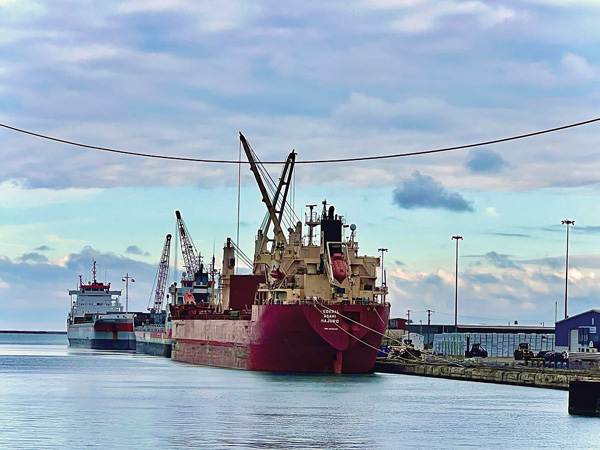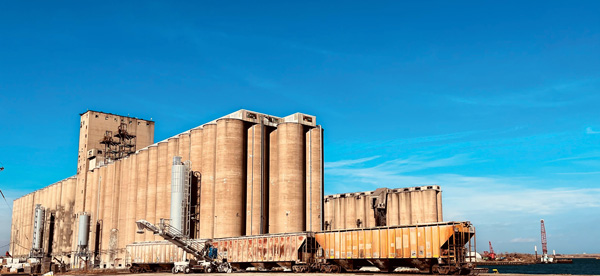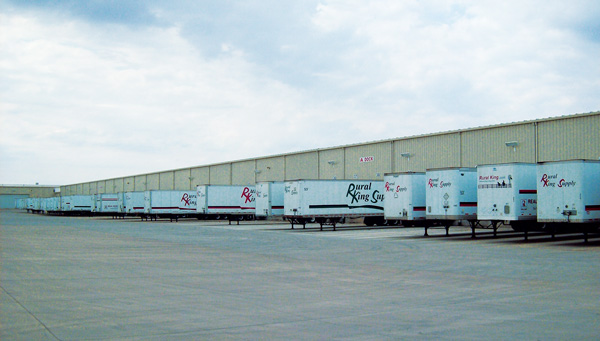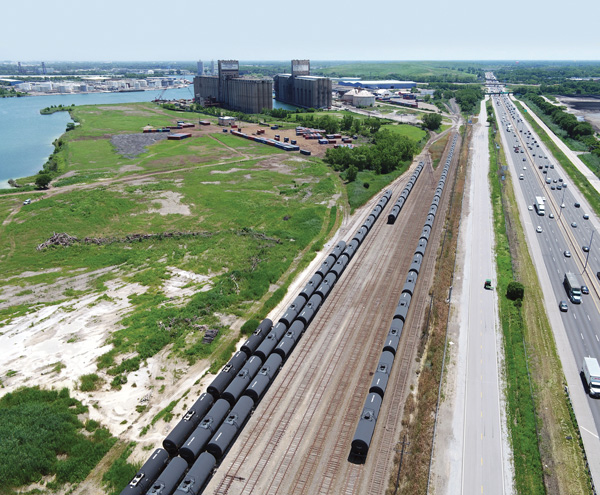Illinois has 14 megasites that are ready and available for development by large end-users, but that is only where the story begins in the Land of Lincoln.
While other states talk a good game about their megasites programs, Illinois puts teeth into the details. For example, Gov. JB Pritzker last year allocated $40 million in Rebuild Illinois Capital Funds to strengthen the state’s megasites program.
“The competitive grant opportunity is open to governments, private businesses or non-profits to support site development in order to attract large-scale industrial investments in underutilized areas and former industrial sites,” according to the Illinois Department of Commerce and Economic Opportunity.
This funding has so far enabled the assemblage and marketing of 14 megasites statewide. The inventory of available large sites ranges from a 137-acre site called Gratton Farm in Steward in Lee County to a 3,300-acre site known as the Marquis Industrial Complex in Hennepin in Putnam County. Other large megasites include a 3,200-acre site in Kankakee County; a 3,184-acre site in Grundy County; and 3,000 acres in Livingston County.
When the governor announced this program last year, he noted that “major job creators are consistently looking for investment-ready sites they can get up and running in a short amount of time — and Illinois is home to some of the largest such sites in the country, all ripe for fresh development.”
Grants from the Megasites Investment Program range from $250,000 to $5 million and are tied to total acreage, up to a maximum award of $5,000 per acre. Eligible sites must contain at least 200 contiguous acres and applicants must own or have an agreement in place to acquire the property at the time of application. A dollar-for-dollar capital match is also required from applicants.
“Megasites are a major draw for companies looking to locate or expand in Illinois, and given our superior infrastructure and workforce, there’s boundless investment opportunities throughout the state,” DCEO Director Kristin Richards said when the program was unveiled. “Megasites are akin to a turnkey house: move-in ready with zero hassle — which is exactly what fast-growing businesses are looking for.”
Grant funds may be used for such expenses as site grading and drainage, rehabbing existing structures, remediation and cleanup, and land acquisition and related costs.
FutureGen Site Awaits the Future
DCEO and Intersect Illinois offer a database of available megasites, as well as smaller developable parcels.These are parcels that have been identified by Intersect Illinois as top sites based on eight characteristics: acreage, utilities, logistics, permitting and entitlement, workforce, ownership, local and state incentives, and environmental and topographic conditions.
One of those sites is a Canadian National Railway served certified site in Mattoon in Coles County, called the FutureGen Site. It comprises 420 contiguous surface acres and 1,200 contiguous subsurface acres owned by Coles Together. The site has been approved by the U.S. Department of Energy as suitable for storing up to 50 MMT of injected carbon dioxide for carbon capture and sequestration.
Dr. Ronda Sauget, president and CEO of Coles Together, calls it a game-changer for Coles County and east central Illinois.
“We have sites across the entire territory. We have identified a couple of prime sites in each region. They have a couple hundred acres each and are near substation infrastructure.”
— Eric Whitfield, Economic Development Director, Ameren Illinois
“We believe that this site is going to be a preferred destination for carbon capture projects,” she says. “The state has already paid for all environmental work. They also passed indemnification language. The local residents support it. We did a fantastic job educating the community. The total real estate package was the No. 1 reason we were selected above the other three finalist sites.”
A few hours to the north, the Illinois International Port District is marketing several build-ready sites of its own to industrial developers. These include IIP Shed 4; a 90-acre site at Butler Drive; and 1-million-BU grain silos (see photo, p. 50).
“Major job creators are consistently looking for investment-ready sites they can get up and running in a short amount of time.”
— JB Pritzker, Governor of Illinois

“We manage over 2,000 acres,” says Erik Varela, director of the Port of Chicago for IIPD. “We have three main land bodies: Iroquois Landing on Lake Michigan; the River Terminal that connects to the Mississippi River; and our terminal on the Little Lake Calumet River.”
Through these three landings, the Port of Chicago is the only Great Lakes port that connects cargo carriers to both the Atlantic Ocean (via the St. Lawrence Seaway System) and the Gulf of Mexico (via the Mississippi River).
“We handle 10 million tons of cargo annually,” Varela says.

Downstate Sites for Data Centers?
Also available to developers are multiple sites being marketed by Ameren Illinois throughout the downstate region.
“Intersect Illinois is marketing AVAILABLE PROPERTIES through its Vetted Sites program.”
— Source: Intersect Illinois
“We handle the bottom three-fourths of the state, from Interstate 80 south,” says Eric Whitfield, director of economic development for Ameren Illinois. “We have available land sites with proximity to Chicago and St. Louis. All of our sites are available for viewing on LOIS. We also support the Vetted Sites program of Intersect Illinois.”
Whitfield notes that “we have sites across the entire territory. We have identified a couple of prime sites in each region. They have a couple hundred acres each and are near substation infrastructure.” These sites are ideally suited for data centers, he adds.
Clean energy companies are also candidates for these sites, he says.
“Illinois has a net zero goal by 2050. We will see more industry coming to Illinois to capitalize on that in the areas of hydrogen, clean fuel, carbon sequestration, and solar,” Whitfield says. “Ethanol and sustainable aviation fuels are opportunities here as well.”
 Rural King Supply is expanding its footprint in Coles County, Illinois.
Rural King Supply is expanding its footprint in Coles County, Illinois.
Image courtesy of Coles Together ED

